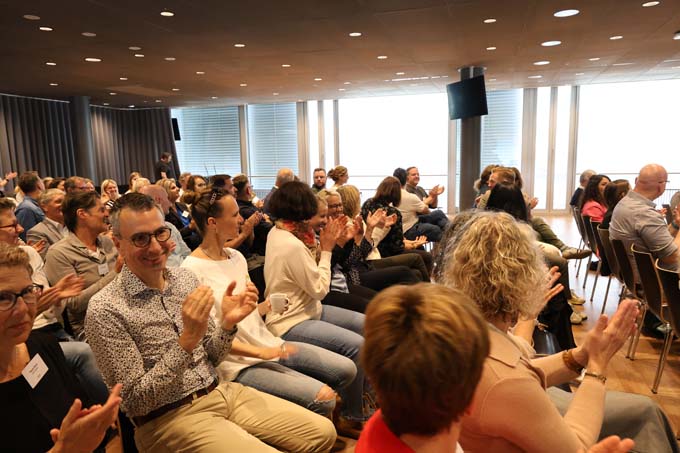The HES-SO supports innovation and sustainability projects of 31 companies and public partners
As part of an extraordinary call for projects, five universities in the Engineering and Architecture department of the HES-SO University of Applied Sciences Western Switzerland are putting their skills and those of their professors at the service of the regional economy.

For the third time since 2021 and following the success of the projects already carried out, the HES-SO's Engineering and Architecture department has launched an extraordinary call for projects to support the regional economy. Of the 102 submissions received, 31 were selected, with a total cost of CHF 1.5 million and involving five of the HES-SO's six schools of engineering and architecture. The projects relate to innovation, competitiveness and sustainability and are each supervised by a professor. They will run for twelve months until April/May 2025 and will be financed with a maximum of CHF 50,000, whereby this amount will be used exclusively for the expenses of the professors involved. Each external partner also undertakes to make an additional financial contribution of 10 % and to provide 10 % in personal contributions.
The call for projects was primarily aimed at SMEs, but also at associations, public institutions and local authorities. The following five examples illustrate not only the regional commitment of the HES-SO's schools of engineering and architecture, but also the diversity of the research topics covered:
HEIG-VD: EYT - Measurement and monitoring of discharges in watercourses
Due to climate change, the measurement of runoff in watercourses is of crucial importance for the management and monitoring of watercourses, especially in alpine regions. It enables improved management of bottlenecks and debris flows during floods. The HEIG-VD's EYT project aims to improve the measurement system so that it can be easily installed by local stakeholders. With the introduction of a stereoscopic 3D measurement and the development of an algorithm combined with camera monitoring, the discharge and other information such as the geometry of the riverbed and its changes should be able to be transmitted in real time.
HES-SO Valais-Wallis - HEI: LERNIT-SynIA - AI as an aid for people with a cognitive impairment
In collaboration with the non-profit association for the promotion of digital technologies WizIT, based in La Forclaz (VS), the HEI School of Engineering is developing the LERNIT-SnyIA project: an AI-supported interface that allows users to create interactive learning scenarios without programming skills and thus become more autonomous. For example, they can use this app to learn how to find the route to their doctor's surgery or which groceries they need to buy in order to prepare a meal.
HE-Arc Ingénierie: LEANergy - Saving energy in industry
The LEANergy project, which is being carried out in collaboration with HE-Arc Ingénierie, aims to develop an AI-based software solution that can be used to identify and quantify opportunities for energy savings of 20 to 40 %. To this end, a large amount of internal (consumption, production, working hours, etc.) and external (calendar, weather) data will be analyzed in real time. The program developed in this project will not only enable more efficient management of energy resources, but will also be able to sound the alarm if unexpected problems occur.
HEIA-FR: LOCGRAM - Coloring bacteria so that the antibiotic is right
Gram staining is a method for differentiating bacteria so that the right antibiotic can be administered in each case. Various solutions are used in this process. The company Swissmeca from Kleinbösingen in the canton of Fribourg is developing such a solution in the form of a microfluidic chip whose microchannels contain liquid reagents. To carry out the staining, these reagents are sucked with a pump to the bacterial sample, which is applied to a slide. This novel system requires 1000 times less chemically aggressive dyes than previous methods and is more reliable, automated, cost-effective and environmentally friendly. However, the liquid reagents can evaporate. HEIA-FR's LOCGRAM project therefore aims to develop reagents in powder form to prevent evaporation, enable long-term storage and ensure product stability.
HEPIA: BOOM - Protecting the hearing of musicians
Musicians' hearing is particularly at risk during concerts and rehearsals. The noise exposure depends on the instrument played and the position in the orchestra and varies greatly depending on the ear. The BOOM project carried out at HEPIA aims to develop a prototype of a networked and inexpensive dosimeter that is not yet available, takes both ears into account (binaural) and includes the calculation of acoustic indicators that are relevant for music-making. Such a special acoustic measuring instrument will also enable the Geneva University Hospital (HUG) to monitor the hearing health of musicians individually and to take preventive measures at an early stage so that permanent and irreversible hearing damage can be avoided in the most vulnerable people.
Source: www.hes-so.ch









